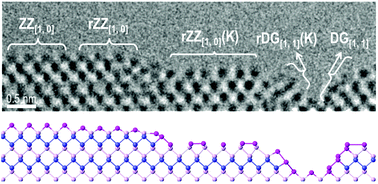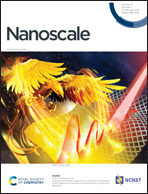In situ TEM study of edge reconstruction and evolution in monolayer black phosphorus†
Abstract
As symmetry-breaking interfaces, edges inevitably influence material properties, particularly for low-dimensional materials such as two-dimensional (2D) graphene and black phosphorus (BP). Hence, exploiting pristine edge structures and the associated edge reconstruction is important. In this study, we revealed edge reconstruction and evolution in monolayer BP (ML-BP) via in situ high-resolution transmission electron microscopy. Under our typical experimental conditions, spontaneous edge reconstruction occurred in all types of as-prepared edges that include zigzag, Klein zigzag, diagonal, and Klein diagonal edges. Reconstruction induces a periodic variation of the bond length and bond angles of edge atoms: an out-of-plane bending for zigzag and diagonal edge atoms and a dimerization for two neighboring edge atoms on the Klein edge, respectively. Surface atom diffusion can also induce edge structural evolution as evidenced by the atomic scale dynamics captured for the zigzag edge. Experimentally resolved edge configurations and reconstruction were further corroborated by ab initio first-principles calculations. This study explores the understanding of the edge stability in 2D BP materials and may provide routes for precisely controlled edge structure engineering.



 Please wait while we load your content...
Please wait while we load your content...